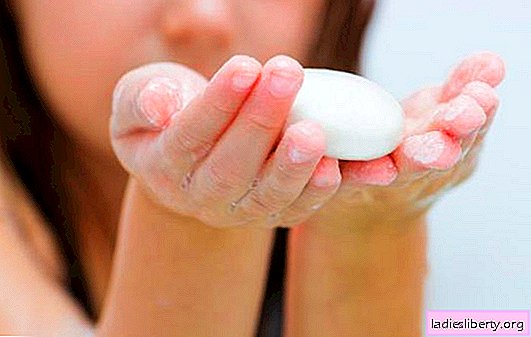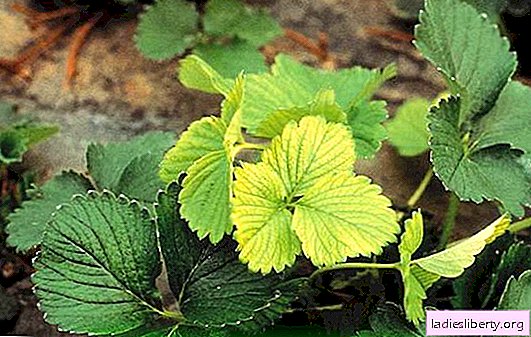
Now it is unlikely that anyone will doubt the benefits of detergents - soaps, shampoos, detergents, etc. It is impossible to do without them: even banal washing of our hands forces us to use liquid or solid soap many times a day. Fragrant foamy cubes give a feeling of cleanliness, freshness, kill invisible microbes and viruses. But, on the other hand, they slowly kill our skin - the largest and most unique human organ that protects the body from any external influences. How to determine the line between the benefits and harms of soap for the skin, which arguments will prevail in their favor - for or against?
The legend of the origin of soap
An ancient legend about the origin of soap claims that it all started with ... sacrifices on a sacred mountain! During the preparation of sacrificial animals at the stake, their molten fat was mixed with ash (and, as you know, ash has a strongly alkaline reaction). Then the rain washed this mixture into a mountain river, i.e. the alkaline fat mass was mixed with water. Women, washing clothes by the river, noticed that the mixture deposited on the shore was very foaming and perfectly washed the dirt - both from clothes and from the body!
So far, the basis of soap is fat, alkali and water.
The chemical composition of the soap
Roughly speaking, in the process of cooking caustic soda (alkaline medium) and animal or vegetable fat, salts of fatty acids — lauric, palmitic, stearic, etc., glycerin, and alkali residues are obtained. Flavors, dyes, moisturizers, various additives are added to them. The basis for solid and liquid soap products are both natural fats and synthetic ones.
Natural fat, alkali, water and some aromatic oil - the perfect composition of a good soap. But, it should be noted that most of the glycerol obtained is extracted and used for other purposes (including cosmetics), and the so-called "synthetic base" is nothing but oil refined products. Is this the first minus that makes you wonder whether soap is good or bad for our skin?
How does soap work?
The soap molecule is a kind of chain, one end of which attracts dirt, and the other itself is strongly attracted by water. Thus, when a person lathers his hands or dirty clothes, the soap molecules “cling” to the dirt, and then they are attracted and carried away by water.
This function is performed by surface-active substances (surfactants) - alkalis, the most aggressive of which is sodium laureth sulfate, which is found in almost all solid, liquid and powder detergents.
The main problem is that in addition to particles of dirt, soap molecules “cling” to the sebum that the skin secretes to moisturize, soften and protect the human body. The lipid-water balance is disturbed, the skin is overdried, becoming more vulnerable. The more soap contains additives, fragrances, preservatives and synthetic components, the more aggressive it acts on the skin. Surfactants destroy the water-lipid layer, and additives can cause allergies. Thus, soap can be very harmful and seriously damage the skin of the hands and the whole body if it has a too bright color and strong smell.
Which soap to choose?
When buying soap or other detergents, be sure to pay attention to its composition. For example, Linalool fragrance causes allergies, dyes, which are indicated by a 5-digit number, contain salts of heavy metals and also cause allergies: titaniumdioxide (Cl 77891), Cl 77492 and others.
Quality and safety
A high-quality product, for the manufacture of which expensive natural components were used, will cost more, but it will do less harm to our skin, and this is its main advantage over cheap analogues. For a good soap, useful for the skin, which cleanses but does not dry it out, use only natural animals or vegetable fats, but not artificial synthetic residues of processed oil.
A safe detergent should contain a minimum amount of free alkali - because it is it that negatively affects the lipid layer of the skin. The standard in this sense is children's and lanolin soap - sodium alkali up to 0.03%.
Glycerol
Soap with a high glycerin content perfectly cares for the skin, does not dry it, but rather restores the fat layer, moisturizes, protects against dryness and cracking. But not everyone knows one feature of this component - glycerin in large quantities has the opposite effect: it draws moisture onto itself from the surface of the skin and this will cause it to dry out. If glycerin is listed among the first components in the soap, this will not bring any benefits.
Antibacterial
Another major misconception is the use of antibacterial soap with triclosan. At first, this soap was considered a great achievement by modern cosmetologists. But, as it turned out, triclosan is able to kill not only harmful bacteria, but also beneficial ones. With frequent use of antibacterial soap, the microflora of the skin is broken, the lipid layer is destroyed, triclosan penetrates the body, weakens the immune system against bacteria, and the bacteria themselves become resistant to its effects.
The antibacterial components of triclosan and triclocarban are persistent and dangerous components, getting through the sewers into the waters of the oceans, cause irreparable harm to the environment.
Natural handmade soap
Currently, you can often find quite expensive handmade soap. Such a detergent can be completely natural organic, made from scratch, or made from an industrial base with the addition of various useful components, fragrances, oils, etc.
This handmade soap is made exclusively from natural ingredients:
· Only vegetable oils (without the addition of animal fats);
· Natural essential oils, extracts of medicinal herbs, white / green tea tree, jojoba oil, peach, apricot, etc .;
· Glycerin released during the saponification process, remains completely in the soap mass;
· Soap making temperature does not exceed 70 ° C, which allows to completely preserve all the useful properties of the raw materials (in industrial production they use high-temperature conditions to speed up the process);
· The cold production method involves the maturation of the finished product within 1 month under a certain storage mode;
· Limited production volumes allow the use of a wide variety of natural additives and aromatic substances.
This soap is very useful for the skin, designed for daily gentle care, does not dry the skin and does not cause allergic reactions.
How to store soap properly
Proper use and storage of a soap bar is an important element in maintaining beneficial qualities. Do not allow liquids to accumulate in the soap dish, because it is a real breeding ground for bacteria.
Liquid soap contains a milder surfactant, in addition, using a bottle of liquid soap, you can avoid direct contact with a detergent.
When choosing soap for everyday use, carefully study the composition, do not skimp, because the most expensive is your health.











